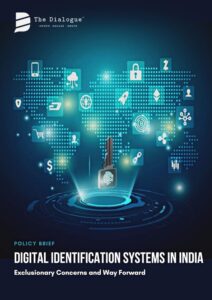OVERVIEW
Digital technological development has transformed the concept of nation-state where there has been a seamless blend of the internet and citizens forming netizens – where individuals actively involve and participate in online communities like in the physical public sphere. Therefore, to keep up with time, governments across the globe, including India, are testing various technological innovations to transform governance to suit the needs and wants of individuals in the digital realm.
India’s journey toward pioneering and transforming governance using technological innovations like Digital Public Infrastructure, has evolved significantly. India has also transformed from being an adopter of technology to creating scalable technology that complements the ecosystem. The two main consortia of Digital Public Infrastructures (DPIs) built using Digital Public Goods (DPGs) are India Stack and Ayushman Bharat Digital Mission (ABDM1), which have various layers and components. One of the key layers/components of both the consortia is the digital identity element to recognise individuals within the digital realm (similar to the physical public sphere) such that online transactions, interactions, identifications etc., are smooth and consistent with the time.
Within the paperless layer of the India stack, Aadhaar is formed as a foundational biometric digital identity for enabling various products and innovations, utilising it as proof of an individual’s legal identity. Various functional digital identities have been formed using Aadhaar as a foundational identification system or other KYC systems, including the Ayushman Bharat Health Account (ABHA) Number, for recognising individuals within the digital health realm under ABDM. As these two digital identity systems within India form the bedrock for utilising various digital public infrastructures, through this brief, we will discuss how foundational and functional digital identification systems work in tandem and what are the key concerns within the Indian digital identification system and what could be the optimal way forward.
PUBLICATION DATE
June 26, 2023
